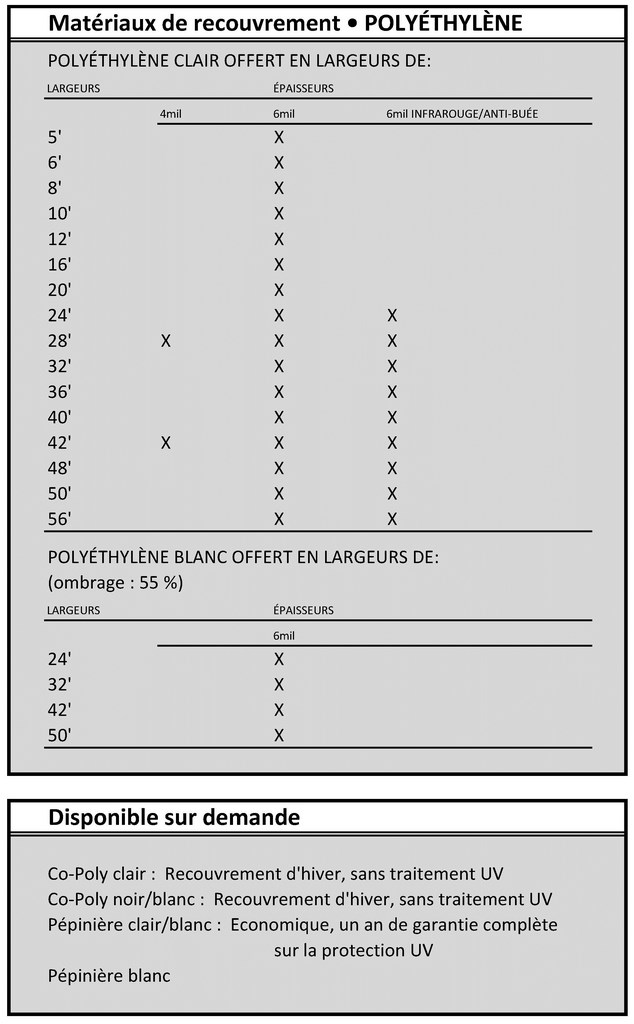Recovering Material
Poly Films
POLY FILM – FOR EFFICIENT GREENHOUSE COVERING
When planning the construction of a greenhouse or replacing the polyethylene of an existing one, the choice of covering material is essential. The greenhouse covering is the building’s thermal envelope, so it’s vital to maintain its integrity with a quality product.
Tessier works exclusively with distributors recognized worldwide for the quality of their polyethylenes. The composition of the polyethylenes we use allows maximum light through to optimize your crops (agronomic and solar gains, particularly important in winter) and ensure their protection in every season. Tessier greenhouse coverings offer optimum transparency to the sun’s rays, ranging from semi-transparent to opaque to IR radiation.
The poly film structure of Tessier greenhouses provides protection against wind, rain and snow. The result is better climate control inside the greenhouse, as well as higher-quality crops and more abundant harvests. As a result, productivity gains are generally observed, providing an attractive return on investment.
POLY FILM AND ENERGY EFFICIENCY
The use of a second polyethylene (double poly film instead of single), even if it reduces light transmission, results in energy savings of over 40% through reduced heat loss. It is therefore possible to improve the energy efficiency of covering materials by using double-walled poly film, replacing the greenhouse’s polyethylene covering at the appropriate time and selecting suitable additives (included in the poly film).
Efficient cladding materials save on heating costs. The following energy sources can be saved by using the right cladding materials: #2 fuel oil, propane, natural gas, waste oil, electricity (heating) and biomass. *
In addition to the type of greenhouse cladding, major energy savings can be achieved through the greenhouse’s finishing details (e.g. weather-stripping around openings, an inflated skirt, an opening side in winter, opening roofs, perimeter insulation, etc.) *link to energy-saving page later
HOW TO CHOOSE YOUR POLY FILM
WHEN TO CHANGE YOUR POLY FILM
Poly film has the advantage of being inexpensive and easy to install. It is generally recommended to change it after 4 growing seasons. Indeed, as poly film ages, its wear and tear increases and its light transmission rate decreases. As a result, the risk of sudden breakage also increases, making it essential to replace the poly film.
STEPS FOR CHANGING POLY FILMS* COVER MATERIAL
- Define the characteristics required of the covering material (cool-climate, temperate-climate or hot-climate crops)
- Analyze the different types of poly film available
- Install properly, avoiding damage to the poly films
- After changeover, check air pressure between poly films
Managing the air pressure circulating between the 2 layers of poly films is very important to maximize the poly film’s lifespan. An over-inflated greenhouse will cause the polyethylene to stretch (creep), while low pressure will result in a loss of energy efficiency and increase the risk of wind-induced tearing. *










